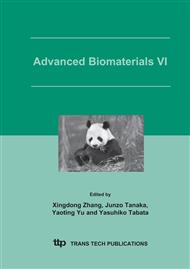p.553
p.557
p.561
p.565
p.571
p.575
p.579
p.583
p.587
Finite Element Analysis of a Stent Implantation in a Stenosed Artery
Abstract:
Instent restenosis (ISR) has been a key factor that restricts the further use of intraoronary stents. And the mechanical interaction between the stent and the artery has been indicated as one of the significant causes for the activation of stent-related restenosis. However, there is very little quantitative information about the interaction of stent with artery. In order to improve the general understanding of coronary stenting, finite element method (FEM) has been used to model the revascularization of a stenosed artery through the insertion of a balloon-expandable stent. Given a stent design, the deformed shape of the stent and possible areas of the artery injury were presented. The fact that the distal end of stent penetrated into the artery wall may help to explain the phenomena that much restenosis occurs at the ends of stents. The recoil ratios of the stent model, the plaque-artery model and the stent-plaque-artery model were 2%, 26.7% and11.3%, respectively. They were well consistent with the experimental data. In conclusion, this work would be helpful for the general understanding of intraoronary stent implantation and stent design optimization.
Info:
Periodical:
Pages:
571-574
Citation:
Online since:
June 2005
Authors:
Price:
Сopyright:
© 2005 Trans Tech Publications Ltd. All Rights Reserved
Share:
Citation:


